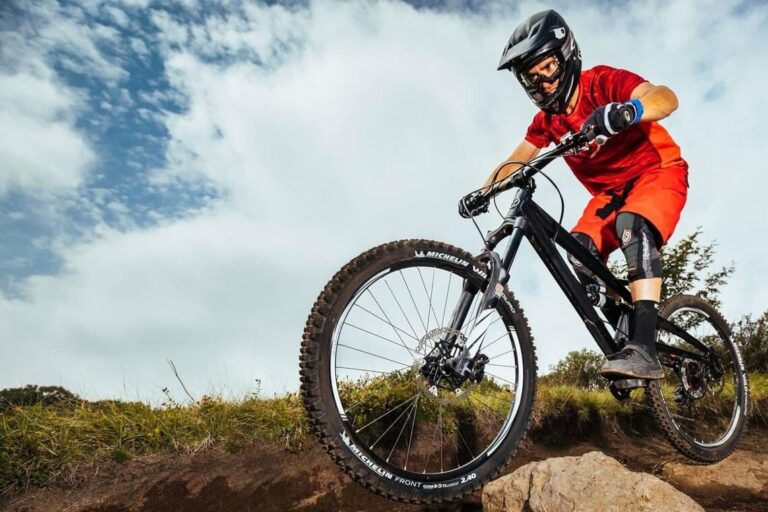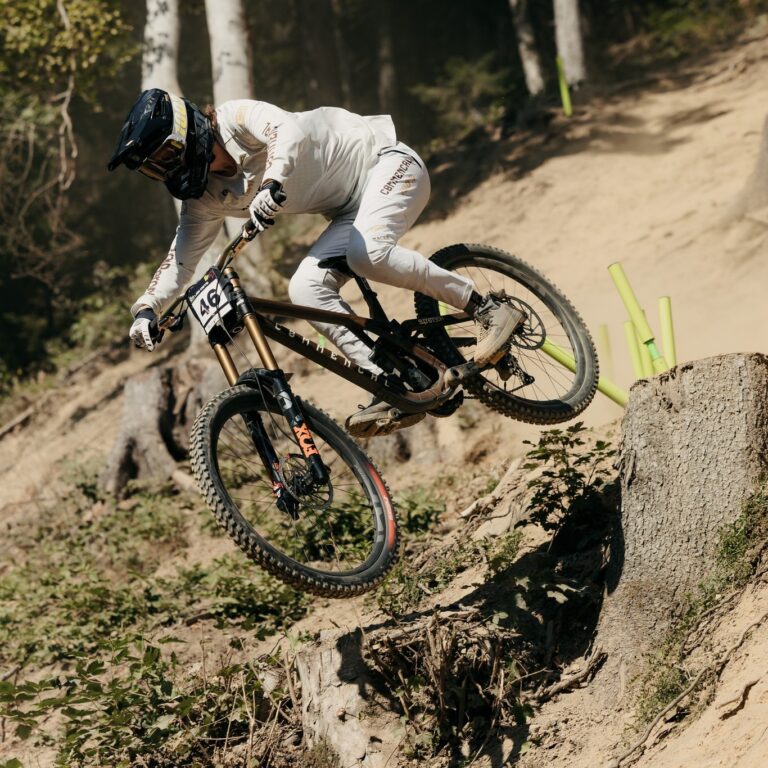Riding High: Maintaining Your Enduro Bike

Key Point Summary of Maintaining Your Enduro Bike:
- Routine Checks: Before and after each ride, give your bike a quick once-over. Look for anything out of the ordinary like loose bolts, frayed cables, or signs of wear and tear.
- Cleaning: Keep your bike clean. A gentle hose down and a wipe can go a long way in removing grime that can wear down parts.
- Lubrication: A well-lubricated chain and moving parts will both perform better and last longer. Know the right type of lube for your riding conditions.
- Brake Maintenance: Regularly check your brake pads for wear and ensure your brake discs are clean and aligned.
- Suspension Care: Keep your suspension system in top shape with routine checks and servicing, including air pressure adjustments and seal inspections.
- Tire Care: Monitor tire pressure and condition. Correct pressure maximizes grip and performance while inspecting for cuts and wear can prevent blowouts.
- Drivetrain Maintenance: Clean and check your drivetrain regularly. A clean cassette, chain, and chainrings mean smoother shifting and less wear.
As a masters cyclist with a penchant for racing and riding across various terrains—be it the rugged trails on my mountain bike, the open roads on my gravel grinder, or the mucky courses on my cyclocross bike—I’ve gathered a wealth of knowledge and experience in the care and keeping of these two-wheeled steeds.
Today, I want to focus on a particular beast of burden: the enduro bike. This machine is a marvel of engineering, designed to tackle both the climbs and the descents, but it demands respect and regular attention to keep it performing at its best. Here’s a dive into maintaining your enduro bike, with a few stories from my trail-tackling adventures to drive the points home.
Routine Checks: The Pre-ride Ritual
I’ve made it a ritual, almost meditative, to give my bike a quick but thorough once-over before heading out. This isn’t just about safety; it’s also about respecting the machine that carries you over mountains and through valleys. Look for anything unusual: loose bolts can lead to catastrophic failures, frayed cables can snap at inopportune moments, and signs of wear and tear might indicate it’s time for a part to retire. Remember, a small issue on your bike can quickly become a big problem on the trail.

Cleaning: More Than Just Cosmetic
After a particularly muddy race day, where the course was more sludge than soil, my bike was an absolute mess. While it might be tempting to let your bike carry its battle scars proudly, dirt and grime can accelerate wear on your bike’s components. A gentle hose down and a wipe can remove most of the offending material. Avoid high-pressure washers though; they can force water into bearings and other places it really shouldn’t go.

Lubrication: The Lifeblood of Your Bike
A squeaky chain is more than just an annoyance; it’s a sign of neglect. Proper lubrication reduces friction, which means less wear on your components and smoother operation. The type of lube you should use depends largely on your riding conditions—wet lube for muddy or wet conditions and dry lube for dusty trails. My rule of thumb: after cleaning the bike, always reapply.

Brake Maintenance: Stopping Power Matters
Descending a steep, technical section when your brakes are less than optimal is not an experience I’d recommend. Regular checks on your brake pads for wear and ensuring your discs are clean and not warped are crucial for maintaining stopping power. There’s a finesse to adjusting brake calipers and replacing pads, but it’s a skill well worth learning.
Suspension Care: Your Comfort and Control
The suspension system on an enduro bike is both a marvel and a maintenance point. Regular servicing, including checking air pressure, inspecting for leaks, and occasionally replacing seals, ensures your ride is smooth and your bike responsive. Neglecting suspension care can lead to a harsh ride and even damage to the frame or components.
Tire Care: Your Contact with the Ground
Tire pressure can dramatically affect your bike’s handling. Too low, and you risk pinch flats and rim damage; too high, and you lose traction. Finding that sweet spot is key, and it varies by rider weight, tire size, and trail conditions. Regular inspections for cuts, wear, and embedded objects can save you from unexpected flats mid-ride.
Drivetrain Maintenance: The Heart of Your Bike
A clean drivetrain is a happy drivetrain. Mud, sand, and grit are the enemies of smooth shifting and efficient power transfer. After rides in particularly nasty conditions, I make sure to clean my cassette, chain, and chainrings thoroughly. It’s a bit of elbow grease, but it pays dividends in longevity and performance.
Conclusion: The Joy of a Well-maintained Machine
Maintaining your enduro bike might seem like a chore, but it’s a labor of love. There’s a deep satisfaction in tackling a challenging trail with a bike that’s dialed in and performing perfectly. Plus, regular maintenance can prevent mid-ride mishaps and extend the life of your bike, saving you money and frustration in the long run.
Final Thoughts: Maintaining Your Enduro Bike
Enduro bikes, designed for the dual demands of uphill efficiency and downhill performance, are subjected to a wide range of stresses on their components and systems. The Ibis HD6, with its cutting-edge design tailored for aggressive trail riding, is no exception and, in some aspects, might even place more emphasis on meticulous care due to its high-performance expectations and premium componentry.
Here’s how:
Maintaining the Ibis HD6, a bike designed for the rigors of enduro riding, requires a comprehensive approach to ensure peak performance and rider safety. Regular pre- and post-ride inspections are crucial to identify and address any potential issues early, such as loose bolts or signs of wear that could compromise the bike’s integrity. Cleaning is essential, particularly for its carbon fiber frame and components, to remove abrasive grime that could degrade the bike’s structure and aesthetics. Proper lubrication, tailored to riding conditions, ensures smooth operation and protects against excessive wear, especially given the bike’s high-quality components.

Brake maintenance is non-negotiable for safety, requiring regular pad inspections and brake fluid checks. The suspension system, a cornerstone of the HD6’s enduro capabilities, demands routine servicing to maintain responsiveness and comfort. Tire care is vital for handling a variety of terrains, requiring regular checks for proper inflation and wear. Lastly, a clean and well-maintained drivetrain is critical for efficient power transfer and smooth shifting, enhancing both climbing and descending performance. Together, these maintenance practices are indispensable for the longevity and reliability of the HD6 on demanding trails.
In summary, the Ibis HD6, with its focus on high performance in demanding conditions, embodies the necessity for diligent maintenance as outlined in the article. Each aspect of care and maintenance is not just about preserving the bike but is integral to unlocking its full potential on the trails.
Remember, your bike takes care of you on the trail, so take care of it in return. Happy trails!
John

FAQ
How often should you service an enduro bike?
An enduro bike should generally be serviced every 50 to 100 hours of riding time, depending on the conditions it’s exposed to and the type of riding. However, more frequent checks and minor adjustments might be needed based on specific ride intensity and environmental conditions.
How long do enduro bikes last?
The lifespan of an enduro bike can vary widely based on maintenance, usage, and component quality. With proper care and regular maintenance, an enduro bike frame can last for many years, often upwards of 5 to 10 years. Components such as drivetrains, tires, and suspension parts will require replacement more frequently due to wear and tear.
How often do you change the oil on an enduro bike?
For the hydraulic components, such as suspension forks and shock absorbers, changing the oil is recommended at least once per riding season or every 100 to 150 hours of riding time. This can vary based on manufacturer recommendations and riding conditions.






